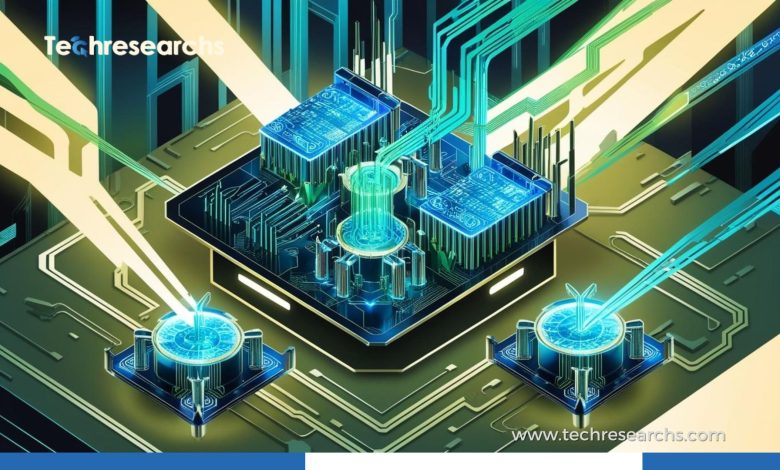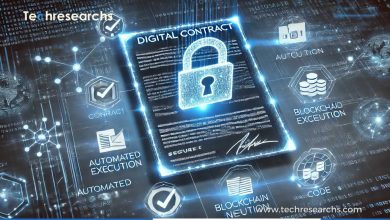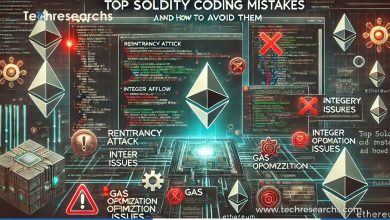Quantum Computing and Cryptography: A New Era of Cybersecurity

As technology continues to evolve, the fusion of quantum computing and cryptography is emerging as a pivotal force that will reshape the landscape of cybersecurity. The rapid development of quantum computers holds the potential to break traditional encryption methods, but it also brings forward new cryptographic techniques that can secure data like never before. In this article, we will explore how quantum computing and cryptography are revolutionizing cybersecurity, the challenges they present, and the future of data protection in a quantum-enabled world.
What is Quantum Computing and How Does It Relate to Cryptography?
Quantum computing is a paradigm of computing that leverages the principles of quantum mechanics, such as superposition and entanglement, to solve complex problems that classical computers cannot efficiently address. Quantum computers process vast amounts of data simultaneously, making them incredibly powerful.
When we discuss quantum computing and cryptography, we refer to the intersection of this advanced computing technology and cryptography—the art of securing communication. Traditional encryption methods like RSA and AES rely on mathematical problems that are hard for classical computers to solve. However, quantum computers could easily break these methods through Shor’s algorithm, which efficiently factors large numbers. This creates a significant risk to current cryptographic systems.
The Need for Quantum-Resistant Cryptography
As quantum computing progresses, there is an urgent need to develop new encryption systems that are resistant to the immense processing power of quantum computers. Quantum-resistant or post-quantum cryptography (PQC) is the field of research focused on creating cryptographic algorithms that can withstand attacks from quantum computers.
The main challenge in this area is to find algorithms that are secure not only against classical attacks but also quantum threats. For example, lattice-based cryptography, hash-based signatures, and multivariate polynomial cryptography are some promising candidates for quantum computing and cryptography solutions.
The Impact of Quantum Computing on Traditional Encryption
Traditional encryption relies on the difficulty of certain mathematical problems, such as factoring large prime numbers (RSA) or solving discrete logarithms (Elliptic Curve Cryptography). However, quantum computing has the potential to render these problems solvable in seconds, making classical encryption obsolete.
- RSA Encryption: Quantum computers can use Shor’s algorithm to break RSA encryption, which would compromise data privacy for industries like banking and e-commerce.
- Elliptic Curve Cryptography (ECC): Similarly, quantum computers can solve the discrete logarithm problem used in ECC, potentially exposing sensitive data across various sectors.
In light of these challenges, transitioning to quantum-safe encryption systems is crucial to maintaining data security in the post-quantum era.
Quantum Cryptography: A Solution to Future Security Needs
While quantum computers may threaten traditional cryptography, they also present an opportunity to enhance encryption methods. One of the most promising areas of quantum cryptography is Quantum Key Distribution (QKD), which allows two parties to share a secret key securely, even in the presence of a potential eavesdropper.
QKD leverages the principles of quantum mechanics to ensure that any attempt to intercept the key will alter its state, making eavesdropping detectable. This makes quantum cryptography fundamentally more secure than classical encryption methods, providing a powerful tool for data protection in the quantum age.
How Quantum Cryptography Works
Quantum cryptography involves the transmission of quantum bits (qubits) through quantum channels. The key advantage of quantum encryption is its reliance on the laws of physics—specifically, the no-cloning theorem, which states that quantum information cannot be copied exactly. This inherent security makes quantum cryptography the most secure encryption method known today.
Challenges in Implementing Quantum Cryptography
Despite its potential, the widespread adoption of quantum computing and cryptography faces several challenges:
- Cost: Quantum computing infrastructure is expensive and still in its infancy. Implementing quantum-resistant cryptography solutions requires significant investment in both hardware and software.
- Quantum Infrastructure: Creating quantum networks capable of supporting quantum key distribution at a global scale is an ongoing challenge. Researchers are exploring satellite-based QKD systems, but these technologies are still under development.
- Standardization: Post-quantum cryptography is still being standardized. Organizations such as NIST are working on selecting and recommending algorithms that can be widely implemented in the coming years.
The Future of Quantum Computing and Cryptography
Looking ahead, quantum computing and cryptography will continue to evolve, driven by advancements in both fields. As quantum computers become more powerful, they will undoubtedly present new challenges, but they will also open doors to previously unimaginable levels of data security.
Researchers are actively working to develop quantum-safe encryption algorithms that will protect our data long into the future. These new algorithms will rely on principles of quantum mechanics to provide encryption that is virtually impossible to break, even by the most advanced quantum computers.
In the future, quantum computers will not just be a threat to current cryptographic systems—they will also provide the infrastructure for creating more secure and efficient encryption methods.
How to Prepare for the Quantum Computing Revolution
Organizations and businesses must start preparing for the shift towards quantum computing and cryptography by adopting quantum-resistant encryption solutions. Here are a few steps to consider:
- Invest in Quantum-Safe Encryption: Begin transitioning to algorithms that are resistant to quantum attacks. This includes researching post-quantum cryptography options and testing them for viability.
- Monitor Quantum Advancements: Stay updated on the progress of quantum computing and cryptography. Understanding the developments in quantum technologies will help organizations stay ahead of potential cybersecurity risks.
- Collaborate with Experts: Partner with cybersecurity professionals and quantum computing experts to ensure your organization is prepared for the quantum revolution.
FAQs
1. What is the difference between classical and quantum cryptography?
Classical cryptography relies on mathematical problems, such as factoring large numbers, which are hard for classical computers to solve. Quantum cryptography, on the other hand, uses quantum principles like superposition and entanglement to secure data, providing higher levels of security.
2. Will quantum computing break all encryption systems?
Quantum computers can potentially break many current encryption systems. However, quantum-resistant algorithms are being developed to ensure data security even in the presence of quantum computing.
3. What is Quantum Key Distribution (QKD)?
QKD is a technique in quantum cryptography that allows two parties to securely exchange a secret key. Any attempt to intercept the key will alter its state, making eavesdropping detectable.
The fusion of quantum computing and cryptography marks the dawn of a new era in cybersecurity. While quantum computers present a threat to current encryption methods, they also offer the opportunity to develop stronger, more secure encryption systems. As we move towards the post-quantum world, embracing quantum-safe cryptographic solutions will be crucial to safeguarding our digital future.



